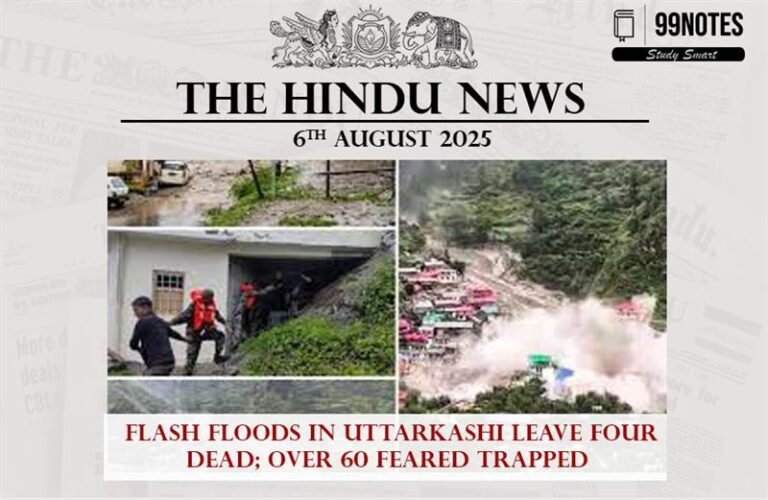16 June 2025 : Indian Express Editorial Analysis
1. Tracking the Monsoon
(Source: Editorial Page, The Indian Express)
| Topic: GS1 – Geographical Phenomena, GS3 – Agriculture & Food Security |
| Context |
|
Monsoon Onset and Stagnation
-
The monsoon arrived in Kerala on May 24 (8 days early), reached Mumbai by May 26, but has since stalled.
-
The rain-bearing front hasn’t advanced since May 29.
-
This early and wet May led to cooler-than-normal temperatures across India, disrupting the creation of heat lows that help draw in monsoon winds.
Rainfall Deficit Trends
-
June rainfall so far has been 31% below normal.
-
Out of 36 meteorological subdivisions in India, 30 recorded deficits exceeding 15%.
Oceanic Conditions: Favorable but Insufficient
-
IMD still predicts an above-normal monsoon.
-
No El Niño and a neutral or weak negative Indian Ocean Dipole suggest a favorable oceanic environment.
Agricultural and Economic Concerns
-
Delayed monsoon progression may affect sowing of kharif crops (like rice, pulses).
-
Commodity prices could rise if rainfall remains erratic, impacting inflation and food security.
Conclusion/Way Forward
-
Policymakers should not assume favorable monsoon predictions alone ensure price stability.
-
Need to monitor commodity markets, ensure buffer stocks, and prepare for possible crop insurance payouts.
-
Revival of the monsoon in the coming weeks is critical for agriculture and rural demand.
| Practice Question: (GS-3 | 10 Marks | 150 Words)
“Discuss the factors responsible for the variability in the southwest monsoon and its implications for food security and inflation in India.” (250 words) |
Also Read: The Hindu Editorial Analysis- 16 June 2025
2. A Stabilising Force
(Source: Editorial Page, The Indian Express)
| Topic: GS2 – International Relations; GS3 – Economy (Global Trade) |
| Context |
|
Changing Global Order
-
The rules-based global order is weakening; institutions like WTO and UN are under pressure.
-
Amid this flux, India and Europe are natural partners in creating a multipolar, stable global framework.
India–EU Trade and Technology Council (TTC)
-
Set up to deepen cooperation on critical technologies, supply chains, and data protection.
-
Aims to reduce dependency on China-centric manufacturing.
Economic and Strategic Significance
-
India is diversifying away from China; Europe is reducing reliance on Russia and the US.
-
India–EU trade negotiations and connectivity initiatives (e.g., India–Middle East–Europe Economic Corridor) gain momentum.
Diplomatic and Political Alignment
-
Shared values of democracy, sustainability, and economic resilience bind the two.
-
Common concerns about regional instability, Indo-Pacific security, and technology governance.
Conclusion/Way Forward:
-
The India–EU axis may become a stabilising force in a fragmented world.
-
India should continue balancing strategic autonomy with deeper economic integration with the West.
|
Practice Question: (GS-2 | 10 Marks | 150 Words) |
Read more – 14 June 2025 : Indian Express Editorial Analysis



